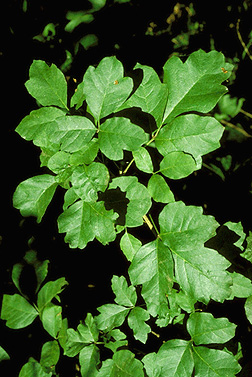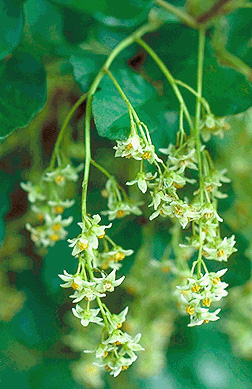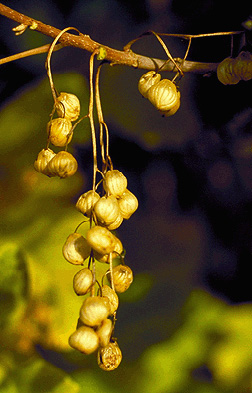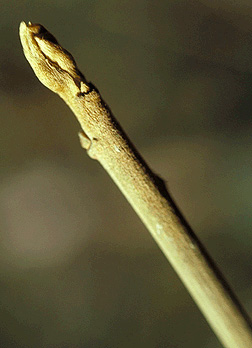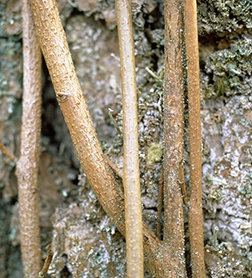 Virginia Tech Dendrology
Virginia Tech Dendrology
Pacific poisonoak Anacardiaceae Toxicodendron
diversilobum (Torr. & A. Gray) Greene
![]()
![]() symbol: TODI
symbol: TODI
Leaf: Alternate, pinnately compound (usually 3 leaflets), deciduous; leaflets are ovate to obovate with the terminal leaflets larger than the lateral leaflets, lateral leaflet margins are irregularly lobed on one side and entire on the other. Emerging leaflets are reddish-green, but soon turn green, leaves turn brilliant red or yellow in the fall. TOXIC.
Flower: Inconspicuous, small and yellow-green, borne in long-stem, hanging clusters, appearing in spring. TOXIC.
Fruit: Small, round drupes hanging in elongated clusters; grayish-white outer skin covers a white seed with black striations (pumpkin-like). TOXIC.
Twig: Twigs are slender and largely unbranched with short, stiff lateral branchlets and tendrils; light brown or tan; pubescent, naked buds. TOXIC.
Bark: Young bark is smooth and tan; older bark gray-brown and rough.
Form: Poisonoak has two distinct forms: an erect shrub, 3 to 10 feet tall, and a climbing vine.
Looks like: poison-ivy
- poison-oak
- skunkbush sumac
- fragrant sumac
Additional Range Information: Toxicodendron diversilobum is native to North America. Range may be expanded by planting. Download the full-size PDF map.
More Information: Fall Color
External Links: USDAFS FEIS Silvics - USDA Plants Database
All material 2025 Virginia Tech Dept. of Forest Resources and Environmental Conservation; Photos and text by: John Seiler, Edward Jensen, Alex Niemiera, and John Peterson; Silvics reprinted from Ag Handbook 654; range map source information
